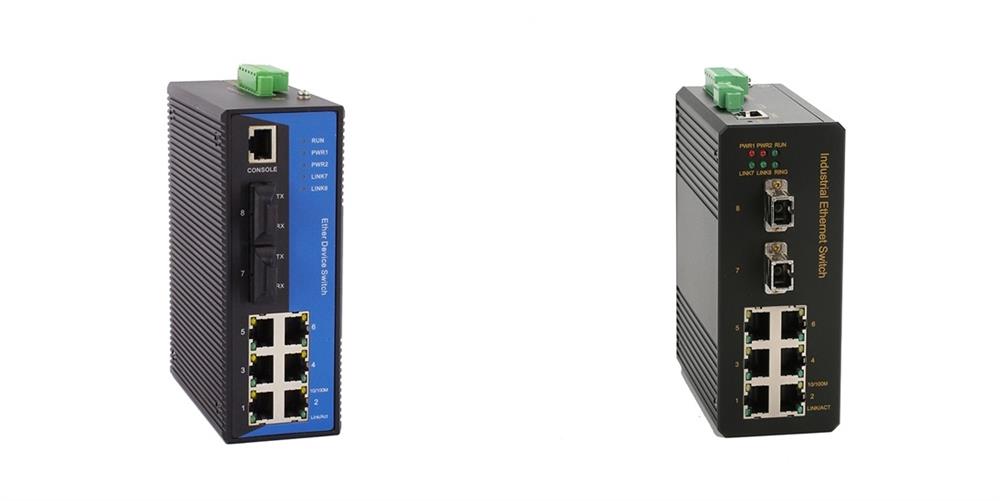What are the 3 Networking Modes of Industrial Ethernet Switch?
Industrial Ethernet switches are designed to meet the needs of flexible industrial applications and provide a cost-effective industrial Ethernet communication solution. The networking mode is more focused on loop design.
In this article, ATO automation will introduce three networking modes of industrial Ethernet switches: serial port management, web management and network management software management.

- Management through a serial port. The switch is provided with a serial cable for switch management. First, plug one end of the serial cable into the serial port on the back of the switch and the other end into the serial port on an ordinary computer. Then switch on the switch and the computer. Open hyperterminal, after setting the connection parameters, you can interact with the switch through the serial cable. This mode does not occupy the bandwidth of the switch, so it is called "out of band". Under this management, the industrial Ethernet switch provides a menu-driven console interface or command line interface. You can use the "Tab" or arrow keys to move through menus and submenus, press Enter to execute corresponding commands, or use a dedicated switch management command set to manage the switch. The command sets of switches of different brands vary. Even the commands of switches of the same brand vary. Using menu commands is more convenient.
- Management through the web. For managed Ethernet switch, it can be managed on the Web, but must be assigned an IP address. This IP address is not used for anything other than managing the switch. By default, the switch does not have an IP address. You must specify an IP address through the serial port or other methods to enable this management mode. When you use a web browser to manage the switch, the switch is like a web server, except that the web pages are not stored in the hard disk, but in the NVRAM of the switch, and you can upgrade the web programs in the NVRAM. When an administrator types the IP address of the switch into a browser, the switch acts like a server that transmits web pages to the computer, giving you the impression that you are visiting a website. This mode occupies the bandwidth of the switch, so it is called "in band". If you want to manage the switch, just click on the corresponding function in the web page and change the switch parameters in the text box or drop-down list. Web management This mode can be implemented on the local area network. Therefore, remote management can be implemented.
- Management through the network management software. All switches on the network management system comply with the SNMP (simple network management protocol), which is a set of network device management specifications that comply with international standards. All devices that follow the SNMP protocol can be managed by the network management software. You only need to install a set of SNMP network management software on a network management workstation. You can easily manage switches, routers, and servers on the network through the LAN (local area network).
Industrial switches can be managed in the preceding three ways. During the initial configuration of the switch, out of band management is usually required. After the IP address is set, you can use the in band management mode. In band management Because the management data is transmitted through the public LAN, remote management can be achieved, but the security is not strong. Out of band management is secure because data is only transferred between the switch and the management machine.

